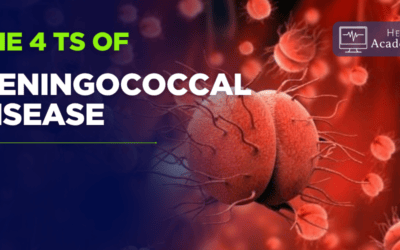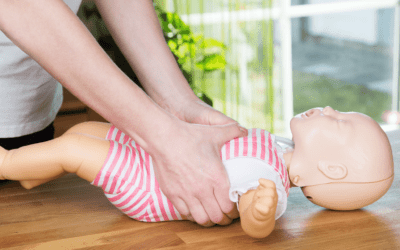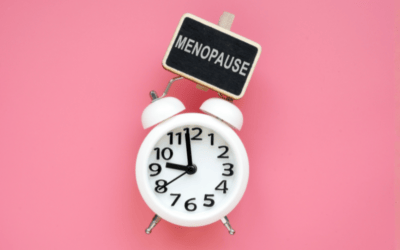If you take blood or give injections it’s very likely that at some point you will have performed (or are going to perform) these sharps-based procedures on someone who is living with HIV. And you will likely have a set of perceptions about that. Be prepared to see (and avoid) some discriminatory practice.
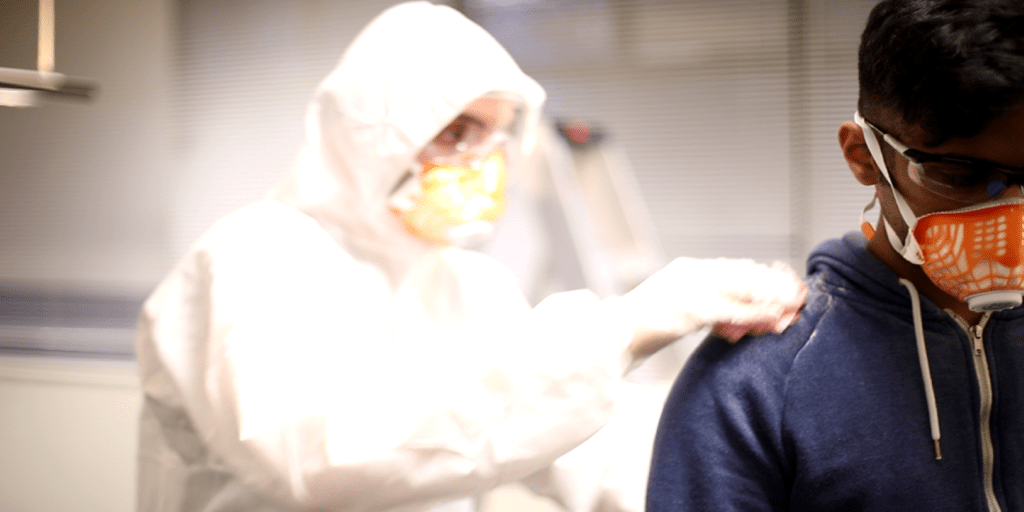
Would YOU do anything differently when handling sharps for a person living with HIV?
The short answer should be NO: As long as you are treating everyone (including yourself) as if they have a blood borne infectious disease when handling sharps, then you would do everything exactly the same.
There are two notable points here though:
- Often people are using incorrect precautions for infection control in the first place. Hence why they end up tightening up their practice and only doing it PROPERLY when they treat someone with a KNOWN infectious disease.
- Despite its reputation, HIV is not necessarily easy to transmit via the blood.
So, Let’s start with what HIV is and why people worry about blood contact when performing injections or phlebotomy. Then we will look at infection control precautions around sharps use.
What is HIV?
HIV (human immunodeficiency virus) is a virus that damages immune system cells and weakens the ability to fight infections and disease. AIDS (acquired immune deficiency syndrome) is the term used to describe a number of potentially life-threatening infections and illnesses that happen when the immune system has been severely damaged by the HIV virus.
AIDS cannot be transmitted between people. But the HIV virus can.
HIV is found in the body fluids. This includes semen, vaginal and anal fluids, blood and breast milk. However, it is an unstable virus and does not survive outside the body for long. HIV cannot be transmitted through sweat, urine or saliva. The most common way of getting HIV in the UK is through having anal or vaginal sex without a condom.
Treatment has improved drastically since the onset of the epidemic in the 1980’s which saw many deaths and illness from HIV and consequent AIDS. The memory of this tragic time lingers on, and a lot of people still have an image in their minds that is not congruent with the reality of what HIV is today.
Most people these days who are living with HIV will lead long and healthy lives if they are on effective treatment, which has come on in leaps and bounds over the years. It’s easier to control than living with Diabetes, usually just one pill a day keeps it at bay.

What are the HIV treatment aims?
The goal of HIV treatment is to have an undetectable viral load. Undetectable equals untransmittable (U=U). This means that the level of HIV virus in the blood is too low to be detected in a test. For people living with HIV, if they have been taking effective HIV treatment and the viral load has been undetectable for 6 months or more, they CANNOT pass on the virus. So, even a needlestick injury where a health care worker or patient has come into blood-to-blood contact with HIV via a sharp will result in a zero to very low risk of transmission.
And, just to note, even if they WERE to contract HIV, it’s not the most worrying of diseases to have these days. There are much much harder-to-manage ones they should be worrying about. More about this later.
What is it like in the rest of the world living with HIV?
Well, it can be pretty dire. There are countries that have entry requirements and will deny entry or residence if a person has a positive HIV status. Check out this website to look at some of those places. Some countries will confiscate HIV medications on arrival. Some will put you in prison. These countries perpetuate stigma and discrimination against people living with HIV by highlighting HIV to be a “dangerous disease”. Treatment opportunities can be lower in other places. Therefore, HIV in some countries is still under-treated with more visible consequences. And the vicious cycle continues.

So, we are in the UK. A supposedly open, accepting, evidence-based system with excellent treatments for HIV available… Why should you be reading this?
We might assume that HIV discrimination only goes on abroad, but it’s happening right here in the UK too, in a subtle but equally pernicious manner. In a clinical setting too, where medical professionals should really know better.
As a phlebotomy and immunisation teacher, I find that there is not a session that goes by (especially a phlebotomy one) where someone doesn’t mention a discriminatory practice that they have seen or performed in the workplace relating to people living with HIV. Here are some of the things I have heard in the last year.
(Please note, these are NOT acceptable or necessary measures in clinical practice):
“We use new sharps bins every time for HIV patients. As soon as the procedure is done, we seal them up and dispose of them”
“In our surgery, we ask HIV patients to bring their own sharps bins and take them away again”
“We double-glove for the HIV patients”
“We ONLY wear gloves for the HIV patients”
“I refuse to take blood from HIV patients. Only the more experienced staff do that”
“I use smaller needles to reduce the risk”
“I usually put the sharp back in the tray and then take it to the sharps bin after. However, with HIV I take the sharps bin with me and dispose of the needle straight away.”
“We always warn staff before they are about to take blood from someone with HIV. We flag it on the records and booking notes”
“We don’t have our HCA doing bloods or injections. She has HIV and might pass it on to the patients”
Whether in relation to HIV and sharps or not, these excessive systems are not only unnecessary, but highly discriminatory practice.
Imagine how this feels for a person living with well-managed HIV whom has no symptoms, feels well and has undetectable (therefore untransmittable) levels of HIV. To have someone say, “can you provide your own infectious sharps waste receptacles and let me put on an extra pair of gloves…” . Especially if a person with a far more infectious disease is sitting next to them in the waiting room, yet is welcomed in with open gloveless arms…
What about if you’re a staff member excluded from performing procedures and enhancing your skill set for no reason other than the outdated stigma behind your diagnosis? An equally awful outcome of this is the perpetuation of low self-esteem and internalised stigma that a person might have of themselves.
If any of the above quotes have shocked and disappointed you then that’s ironically a good thing. You know your stuff!
If any of the quotes unfortunately sound familiar then it’s perhaps time to review some clinical practice that could not only be discriminatory, but against the law.
Did you know?
- People diagnosed with HIV are considered for the purposes of the Equality act (2010) to have a ‘disability’.
- This Act prohibits discrimination by a service provider where a service provider treats a person less favourably than it treats or would treat others “because of a protected characteristic [including disability]”.
- All the above practices constitute direct discrimination and therefore are UNLAWFUL
- Equality Act 2010 (Schedule 1, para 6(1), Equality Act 2010). Section 29(1)

The final push to write this blog came just after World AIDS day (1st December 2022) from reading an opinion piece in the BMJ. It stated that in a survey, only “16% of the public knew that someone with HIV on effective treatment can’t pass the virus on”. The author points out that “Education and knowledge about living with HIV today has not kept pace with developments”
But what about the diseases that CAN easily be transmitted via the blood?

Consider this: Hepatitis B is around 100 times more infective than HIV. Hepatitis B virus is much hardier than HIV and can hang around on surfaces for up to 7 days (unlike HIV which dies very quickly after being exposed to the air). Malaria is spread through the blood. Marburg, Ebola, Hepatitis C, Syphilis; these too are blood borne diseases. Furthermore, people do not always know they are carrying a disease and may be asymptomatic (enter: COVID-19 and mask-wearing, for example, or google “typhoid Mary” and why hand washing around food preparation areas is important). So, because of this we use standardised Universal Precautions and should do so with every patient. This way, there is no discriminatry practice and everyone remains as safe as possible.
Did you know?
- There have been five cases of occupational transmission of HIV through a needle-stick injury in healthcare settings in the UK.
- However, there have been NO needle-stick transmission cases at all since 1999 in a healthcare setting.
- There have been no reported cases of HIV needle-stick transmission in a social care setting.
- Transmission risk is estimated to be 3 per 1,000 in needle stick injuries involving someone known to be HIV positive.
- However, for a person on HIV treatment, there is virtually no risk.
- Statistics from: National AIDS Trust
So, how SHOULD we be handling sharps to avoid discrimination in persons living with HIV?
There is consensus among the national guidance on infection control that certain universal precautions are a must. For example, NICE sets out a lengthy and comprehensive set of guidance encompassing both immunisaiton and phlebotomy procedures. For example, the use of Aseptic Non Touch Technique (ANTT) for clinical procedures.
Sharps management during immunisations
For immunisations the national guidance indicates:
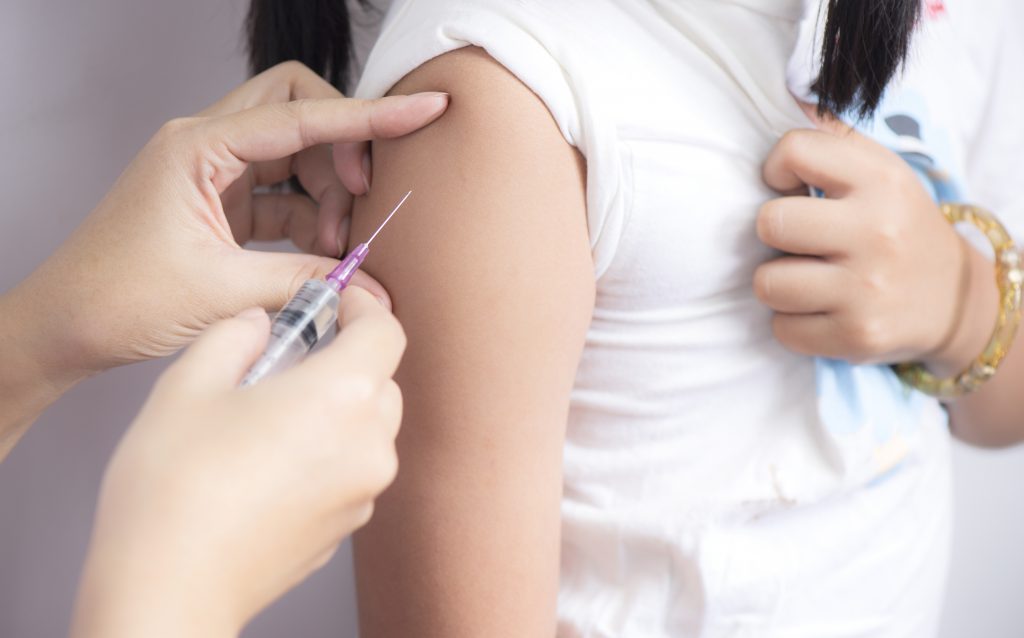
- Gloves are unnecessary. There is not likely to be a large amount of contact with blood. The venous system is not being accessed and it’s a relatively quick procedure which does not require a great deal of technical skill.
- One should use single-use needles and dispose of them straight away.
- Skin decontamination is not required unless the skin is visibly dirty. In which case soap and water should be used.
- Aprons, visors and goggles are unnecessary (unless you’re in the middle of a pandemic, in which case PPE may be tightened for that reason).
All the standard injection precautions for immunisation are in the Green Book.
Nothing should be any different when practicing as someone with HIV, or performing a procedure involving sharps on a person living with HIV.
Sharps management during phlebotomy
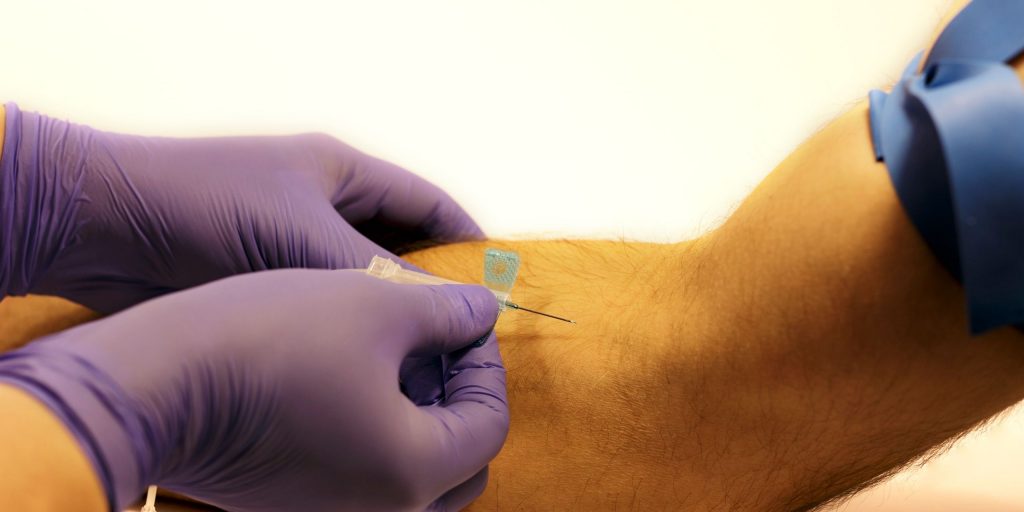
For phlebotomy, the procedure involves accessing the circulating blood supply (a vein) directly -and for a longer period. Therefore, exposure risks are considerably higher and a higher quantity of blood is likely to be met with. The site of the puncture can bleed more vigorously and in larger amounts. The needles have large hollow bores which when retracted are filled with blood (unlike an immunisation which will be filled with medicine).
So, for phlebotomy it’s slightly different:
- Gloves are recommended. They won’t prevent a needlestick injury, but they will wipe off a degree of blood on the way in.
- Skin decontamination is also recommended with a solution of chlorhexadine and alcohol. (Because not only do you want to reduce infection risks, you also want a clean uncontaminated sample which will deliver the most accurate results).
Find more details in the comprehensive WHO guidance on Phlebotomy.
Again, you should do NOTHING differently where HIV is concerned.
Some differences in sharps use between the two procedures. But what is a similar theme around them?
Regardless of medical status, both procedures require having an understanding of universal precautions to take around sharps-use.
Both procedures involve having a sharps bin nearby, where the singly-used puncture device can be disposed of into immediately.
And both procedures require that sharps bins are not overfilled, and are sealed properly when full.
Hand hygiene is a must between all patients.
And ultimately, both procedures require that a person (or equally a staff member) with HIV is treated with dignity and respect and that NO discriminatory practices are used.
So, is it time to review your practice or give a colleague a nudge? Discriminatory practice is happening every day in relation to HIV and sharps use. Be on the look out and let’s nip this in the bud.
Remember U=U.

If you feel it’s time for some HIV and sharps awareness training for you or your team here are some useful links:
https://www.brigstowe.org/hiv-awareness-training/
https://www.nat.org.uk/our-work/training-and-learning
https://www.tht.org.uk/our-work/training
https://ght.org.uk/positively-speaking-hiv-awareness-training


